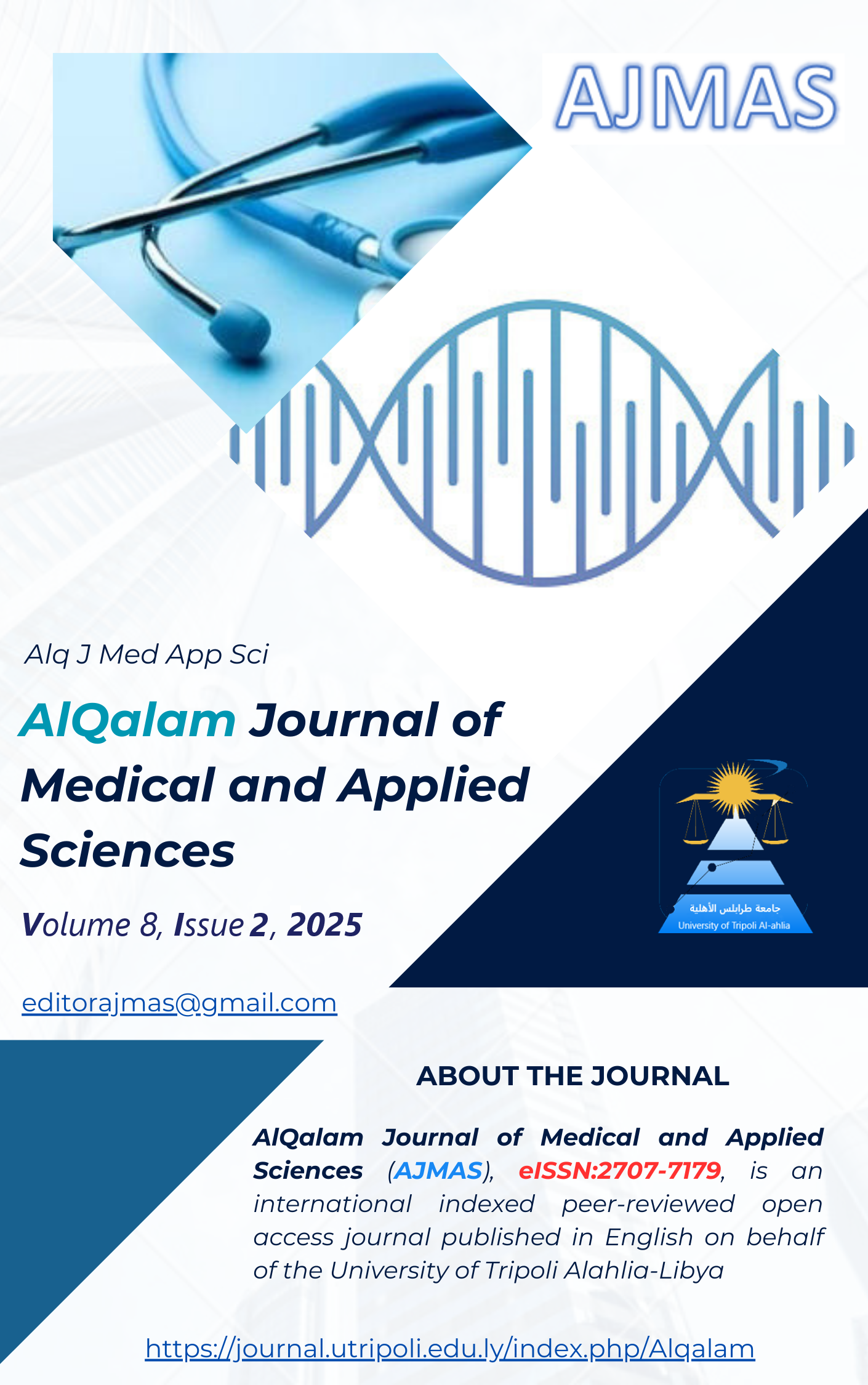A Comparative Study of Hematological Parameters and Serum Ferritin Levels Between Males and Females in El-Beida City, Libya
DOI:
https://doi.org/10.54361/ajmas.258243Keywords:
Serum Ferritin, Hematological Parameters, Male and FemaleAbstract
Sex-based differences in hematological parameters and iron storage biomarkers such as ferritin are well-documented in clinical literature, often attributed to hormonal influences, iron metabolism, and physiological differences between males and females. Understanding these variations is essential for interpreting laboratory results and managing gender-specific health conditions. This study aimed to compare age, serum ferritin levels, and key hematological indices between male and female participants to elucidate gender-related physiological differences. Descriptive statistical analysis was conducted on data obtained from male and female groups, including measurements of age, ferritin, white blood cells (WBC), hemoglobin (HB), red blood cells (RBC), platelet count, hematocrit (HCT), mean corpuscular volume (MCV), mean corpuscular hemoglobin (MCH), and mean corpuscular hemoglobin concentration (MCHC). The mean age was comparable between males (40.6 ± 1.902 years) and females (41.95 ± 1.772 years), though with a wider age range in males. Ferritin levels were significantly higher in males (148.73 ± 16.73 ng/mL) than in females (50.53 ± 20.34 ng/mL), reflecting differences in iron storage capacity. Males also exhibited higher values in HB (15.69 ± 0.92 g/dL), RBC (5.443 ± 0.19 ×10⁶/μL), and HCT (46 ± 1.64%), while females had higher WBC counts (7.145 ± 0.59 ×10³/μL) and platelet counts (289.9 ± 17.43 ×10³/μL). Red cell indices such as MCV, MCH, and MCHC were also greater in males compared to females.
Downloads
Published
How to Cite
Issue
Section
License
Copyright (c) 2025 Siham Alsagheer, Fayrouz Khaled

This work is licensed under a Creative Commons Attribution 4.0 International License.














